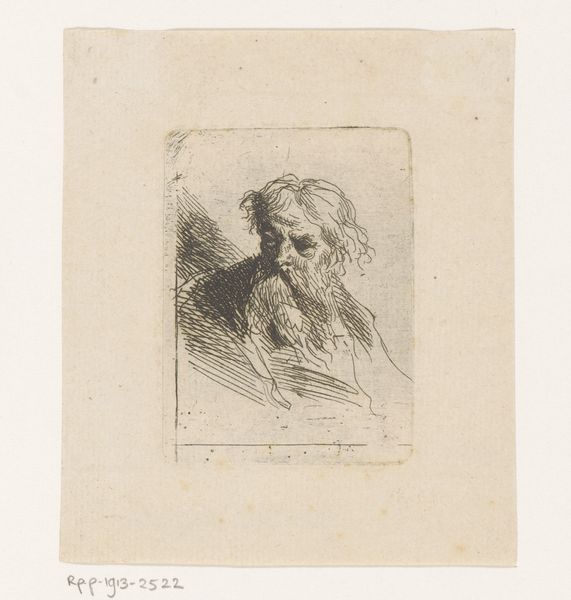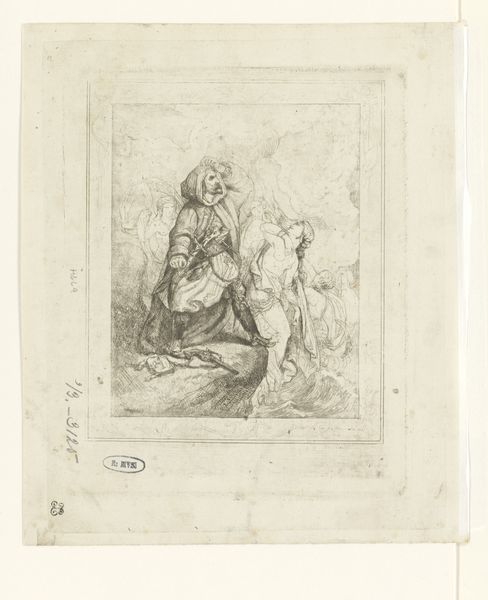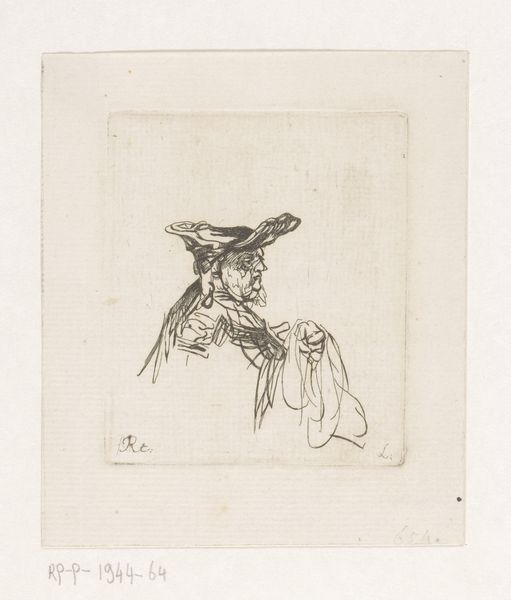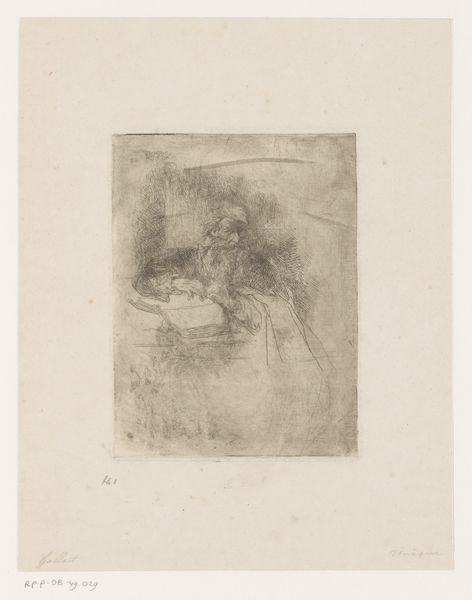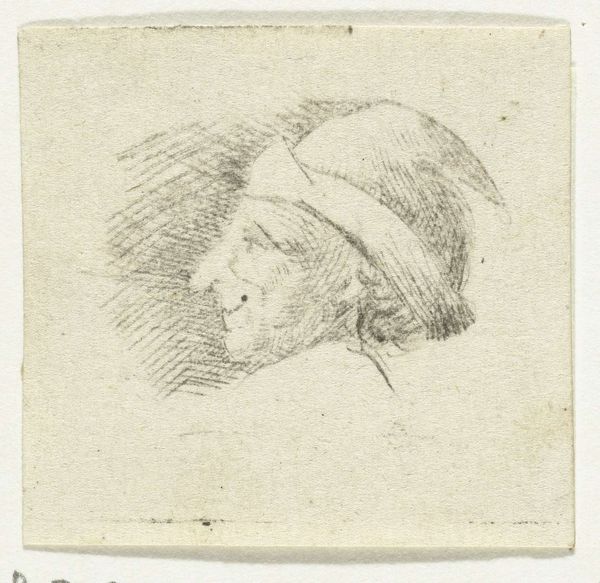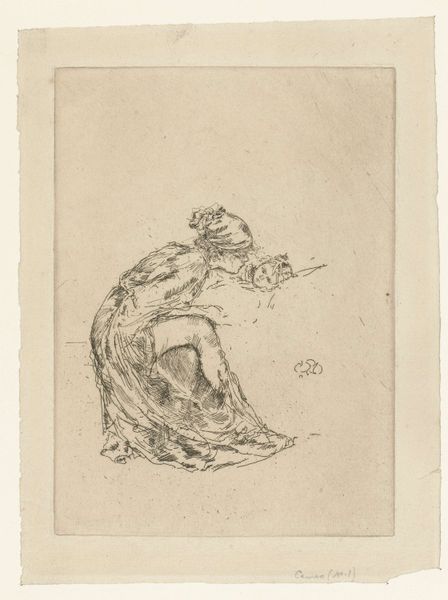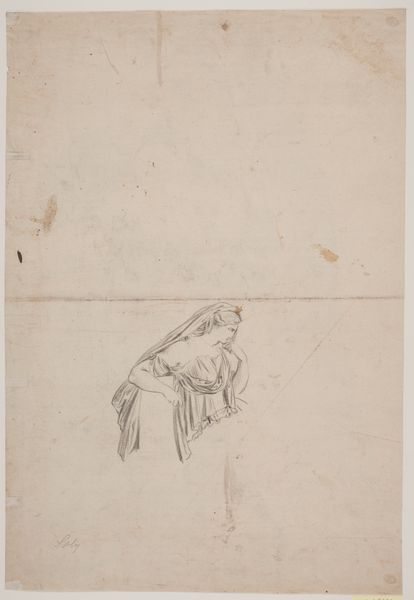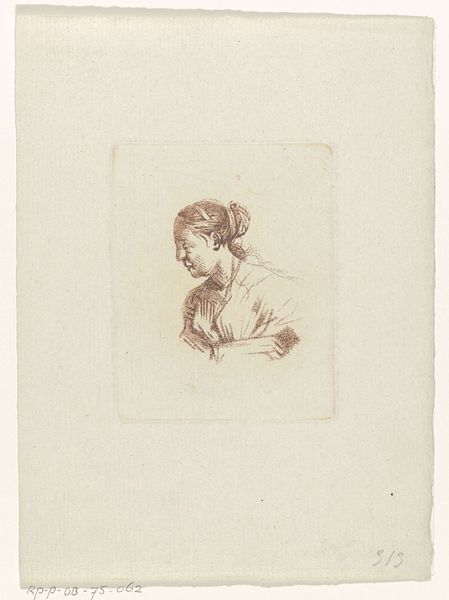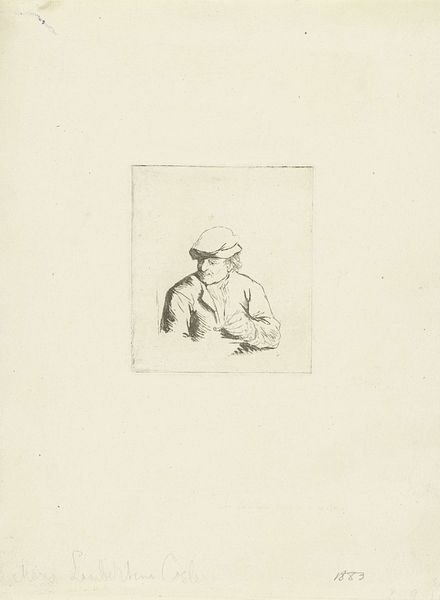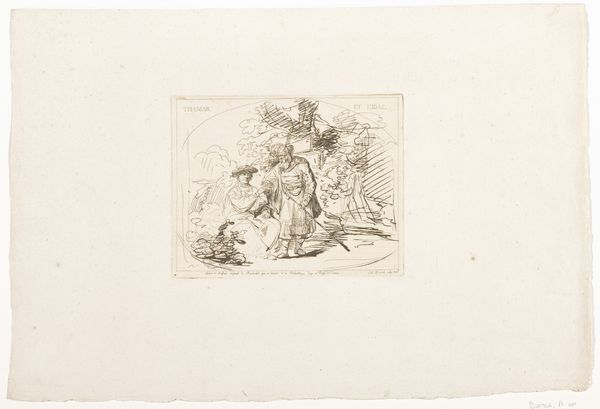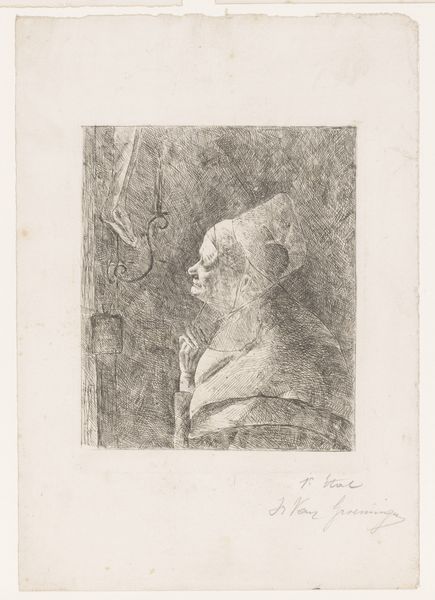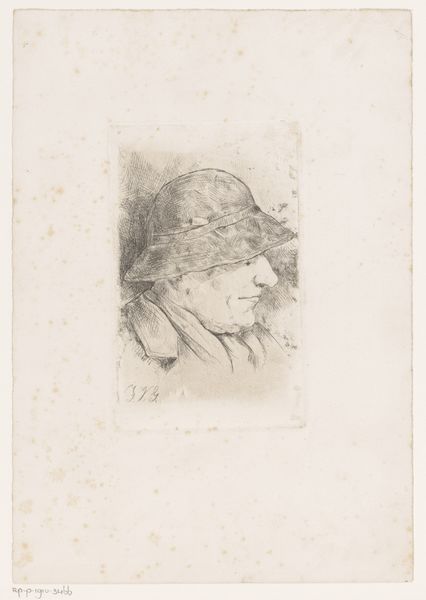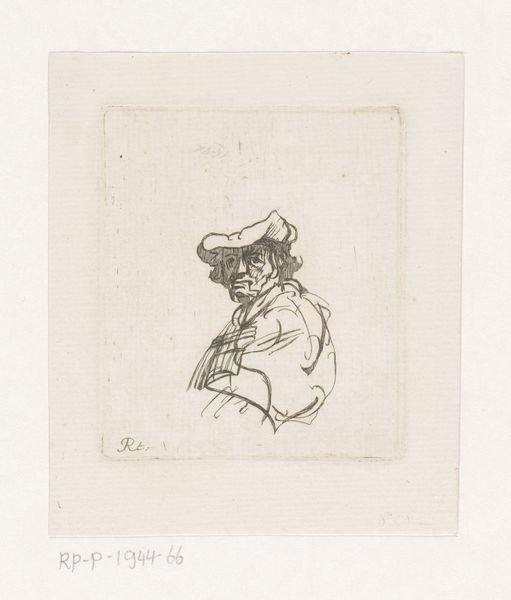
print, etching
#
portrait
# print
#
etching
#
etching
#
figuration
#
history-painting
Dimensions: height 86 mm, width 93 mm
Copyright: Rijks Museum: Open Domain
Curator: Here we have Johann Daniel Laurentz's "Old Man with Phrygian Cap," created sometime between 1739 and 1810. Editor: What strikes me immediately is the almost stark simplicity. The composition is very direct, and the etching, the lines... they feel fragile, yet the figure is so present. Curator: Absolutely. As an etching, it offers insights into the printmaking process. Look closely at the varying line weights, suggesting different levels of pressure applied to the plate. It reveals Laurentz’s labor and technique, fitting within the broader print market and its consumption. The paper itself, likely a readily available stock, also speaks to this era. Editor: Yes, and these stark lines and use of negative space define form here. There's something quite moving in how his face is constructed; these lines, etching into it a life lived. See how the artist models the shadows, highlighting the aged textures. Curator: The Phrygian cap itself is intriguing, symbolizing freedom and revolution during that era, suggesting Laurentz’s work possibly references to revolutionary social upheaval through its mass production and availability via print. What were the implications for ordinary folk of that kind of visual messaging? Editor: Good point. I see a somewhat abstracted quality. Though clearly a portrait of a human form, I’m more captivated by the way the image occupies this square space: the stark angles and their dynamic balance, even a subtle play of light that reveals form, lending the print a somewhat contemplative quality. Curator: Its themes, the materials, its availability all offer unique glimpses into society. Prints democratized imagery—this old man became a commodity in a very real sense. Editor: Indeed, but equally fascinating to me is simply the aesthetic experience it offers, beyond just an illustration or commentary, the raw emotive power distilled via masterful technical approach. Curator: Ultimately, considering both its social implications and its aesthetic qualities enriches our viewing experience, providing insights to its consumption and reception during a time of change. Editor: It encourages us to look deeply, to discover how lines and forms speak volumes about our shared humanity.
Comments
No comments
Be the first to comment and join the conversation on the ultimate creative platform.
